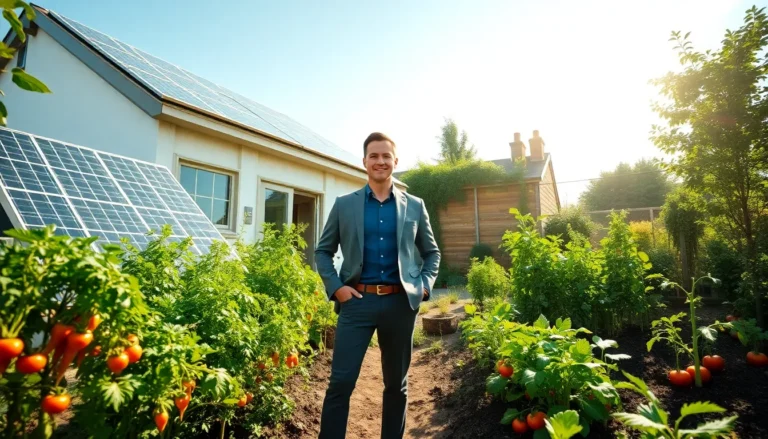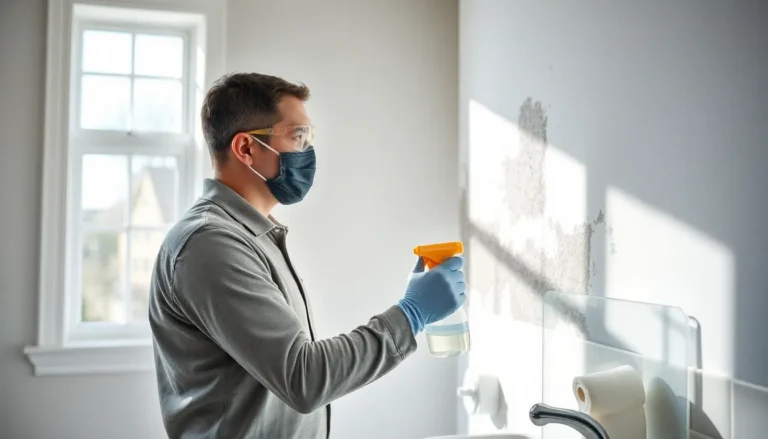Imagine a world where your home isn’t just a dwelling but a sanctuary for the planet. Sounds dreamy, right? Enter sustainable living builders, the eco-warriors of the construction industry. They’re not here to build just any type of house: they’re crafting homes that care for the environment while keeping family comfort in mind. If you’ve ever pondered how to blend living with loving Mother Earth, this guide is your blueprint to understanding the transformative power of sustainable practices in home building. Let’s jump into why these builders are turning the green dream into a colorful reality.
Table of Contents
ToggleThe Importance of Sustainable Building Practices

Sustainable building practices serve as the backbone of addressing environmental concerns within the construction industry. As urban landscapes expand and climate awareness grows, the need for eco-friendly solutions becomes pressing. These practices help reduce carbon footprints, conserve natural resources, and promote healthier living environments. Building homes that integrate sustainability isn’t merely a trend: it’s a necessary evolution in construction. Think of it as the planet’s way of telling us to step up our game, because not only does caring for the Earth lead to reduced utility costs, it also fosters a sense of community and responsibility. When builders commit to sustainability, they set an example, showcasing that construction can be both innovative and conscientious.
Key Principles of Sustainable Design
Sustainable design is driven by principles that prioritize the balance of human needs with ecological health. Here are a few foundational concepts:
Choosing Sustainable Materials
Opting for sustainable materials means selecting resources that are either renewable or have a minimal environmental impact. Think bamboo flooring or recycled steel framing. These choices not only reduce waste but also enhance the building’s lifecycle.
Energy Efficiency in Building Design
Energy-efficient homes make use of better insulation, strategic layout, and sustainable energy sources. From solar panels to energy-efficient appliances, these features reduce energy consumption, light on the planet’s resources, and keep energy bills in check.
Water Conservation Strategies
Freshwater is becoming scarce in many regions, and innovative water conservation strategies like rainwater harvesting systems or drought-resistant landscaping ensure that homes use water responsibly. Builders focusing on these strategies often find that their clients appreciate the long-term savings and positive environmental impact.
The Role of Technology in Sustainable Construction
In the realm of sustainable construction, technology emerges as a game changer. Advanced building information modeling (BIM) allows architects and builders to visualize designs before breaking ground. This technology optimizes resources, minimizes waste, and enhances overall project efficiency. Also, smart home technologies integrate energy management systems, enabling homeowners to regulate their energy consumption in real time. Imagine controlling your thermostat from your phone and checking water usage with a tap, ease meets sustainability. Drones, too, are changing the landscape. They enable builders to survey land more accurately, ensuring that projects adhere to sustainable practices from the start.
Case Studies of Successful Sustainable Living Builds
Learning from successful projects provides valuable insights into sustainable building. For instance, the Zero Energy House in Austin, Texas, produces as much energy as it consumes, showcasing the possibility of homes that operate independently from the power grid. Another exciting model is the Bullitt Center in Seattle, often dubbed the greenest commercial building. Its design includes features like a living roof and rainwater harvesting, making it a benchmark for future projects. These cases not only highlight practical applications but also inspire new builders to push the envelope of sustainable design. Importantly, they prove that eco-friendly living doesn’t compromise comfort or aesthetics.
Tips for Homeowners: How to Work with Sustainable Builders
Embarking on building a sustainable home? Teaming up with the right builder is vital. Here are some tips to streamline the process:
- Research Thoroughly: Look for builders experienced in sustainable practices. Check their portfolio for evidence of innovative designs and eco-friendly materials.
- Establish Clear Communication: Sit down with potential builders to discuss your vision and sustainability goals. Clear expectations can lead to better outcomes.
- Stay Involved: Engage in the design process. Your ideas combined with a builder’s expertise will lead to greater satisfaction in the final product.
- Check Certifications: Builders with certifications in sustainable practices often have the knowledge and skills necessary to execute successful green projects. Don’t hesitate to ask.
This partnership approach empowers homeowners, ensuring the dream of a sustainable home becomes a reality.
The Future of Sustainable Living in Construction
As concerns about climate change and resource depletion intensify, the future of sustainable living in construction looks bright yet challenging. Trends reveal a significant shift toward regenerative building, designs that don’t just minimize harm but actively improve the environment. Innovations like carbon-negative materials and advanced recycling processes are just the tip of the iceberg. The industry must embrace a circular economy model, where waste from one process serves as a resource for another. Education plays a pivotal role as well: builders and homeowners alike must stay informed about sustainable practices. By fostering collaboration between various stakeholders, architects, developers, and homeowners, the sector can advance and realize the vision of a greener future.



